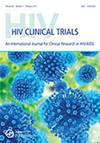衡量虚弱在艾滋病毒干预措施效果明显下降中的潜在作用
Q2 Medicine
引用次数: 2
摘要
目的:在最近的艾滋病毒干预试验中,干预效果似乎随着时间的推移而下降。研究人员将其归因于干预效果的“减弱”或丧失。另一个可能的原因是感染风险或“脆弱性”的异质性。我们提出了一种在随机对照试验中评估虚弱和衰弱对干预效果和统计能力的影响的方法。方法:采用乘法风险降低法,建立了疾病发病率和发病率比(IRR)作为虚弱和衰弱函数的数学公式。我们设计了研究场景,保持研究相关因素不变,改变衰弱和虚弱参数,并测量疾病发病率、IRR和统计能力的变化。结果:我们发现,随着时间的推移,虚弱本身会影响疾病的发病率。然而,脆弱对内部收益率的影响微乎其微。对IRR影响最大的因素是干预效果及其预期减弱的程度。我们还发现,即使是适度的减弱也会导致统计能力的不可接受的下降,而脆弱对统计能力的影响是最小的。讨论:我们得出结论,相对于干预效果,虚弱对试验结果的影响最小。因此,研究资源最好用于在整个试验过程中保持干预效果不变(例如,加强疫苗接种计划或促进治疗依从性)。本文章由计算机程序翻译,如有差异,请以英文原文为准。
Measuring the potential role of frailty in apparent declining efficacy of HIV interventions
Objective:In recent HIV intervention trials, intervention efficacies appear to decline over time. Researchers have attributed this to “waning,” or a loss of intervention efficacy. Another possible reason is heterogeneity in infection risk or “frailty.” We propose an approach to assessing the impact of frailty and waning on measures of intervention efficacy and statistical power in randomized-controlled trials. Methods:Using multiplicative risk reduction, we developed a mathematical formulation for computing disease incidence and the incidence rate ratio (IRR) as a function of frailty and waning. We designed study scenarios, which held study-related factors constant, varied waning and frailty parameters and measured the change in disease incidence, IRR, and statistical power. Results:We found that frailty alone can impact disease incidence over time. However, frailty has minimal impact on the IRR. The factor that has the greatest influence on the IRR is intervention efficacy and the degree to which it is projected to wane. We also found that even moderate waning can cause an unacceptable decrease in statistical power while the impact of frailty on statistical power is minimal. Discussion:We conclude that frailty has minimal impact on trial results relative to intervention efficacy. Study resources would, therefore, be better spent on efforts to keep the intervention efficacy constant throughout the trial (e.g., enhancing the vaccine schedule or promoting treatment adherence).
求助全文
通过发布文献求助,成功后即可免费获取论文全文。
去求助
来源期刊

HIV Clinical Trials
医学-传染病学
CiteScore
1.76
自引率
0.00%
发文量
0
审稿时长
>12 weeks
期刊介绍:
HIV Clinical Trials is devoted exclusively to presenting information on the latest developments in HIV/AIDS clinical research. This journal enables readers to obtain the most up-to-date, innovative research from around the world.
 求助内容:
求助内容: 应助结果提醒方式:
应助结果提醒方式:


